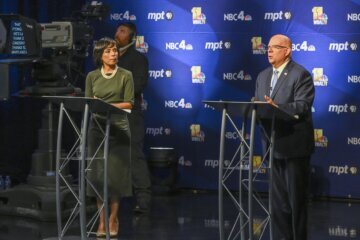 View Video
View Video
October 10th, 2024, 04:55 PM EDT

Rosa and Selka get lots of attention in their starring roles at the public daily feedings at the Monterey Bay Aquarium, especially during Sea Otter Awareness Week.
But some of their most important work is behind the scenes, serving as foster moms to abandoned pups in the aquarium’s one-of-a-kind program to rescue, nurture and return sea otter pups to the wild.
Rosa and Selka are part of a group of surrogate sea otters who can’t be released back into the wild, either because of injury or inability to stay away from humans. But they still can teach these rescued pups how to be sea otters.
They show them how to eat crabs and crack open clams and mussels; they protect and guide the pups during interactions with other otters; and they allow the pups to imprint on their own species, teaching them that they are sea otters.

Neither otter has given birth, but Rosa has raised 15 pups and Selka has raised three, one of which was found abandoned at a nearby beach last year. Their most recent pups are due to be released into the wild in late October.
Since 2001, the aquarium has rescued and released some 100 sea otter pups as part of its conservation efforts around the world. They are part of the more than 876 sea otters who have been treated at the aquarium.
One of California’s most popular tourist destinations, the nonprofit aquarium welcomed nearly 2 million visitors in 2018 and reported $103 million in expenses. Some 13% of that budget — nearly $13 million — went to conservation and research.

The aquarium started rehabilitating newborn and injured sea otters in 1984, before the aquarium even opened its doors later that same year.
Because of the fur trade in the 18th and 19th centuries, sea otters were nearly hunted to extinction in the state, the aquarium says. The state’s population is currently just over 3,000 sea otters between Santa Cruz and Santa Barbara. (The otter population has not yet been restored to their historical range from Alaska to Mexico’s Baja California.)
The aquarium’s efforts are slowly restoring the local population.
“The first animals that we worked with were pups that had stranded, and the idea was that we would be able to populate the exhibit here at the aquarium with stranded animals, as opposed to going out and collecting otherwise healthy wild sea otters and moving them into captivity,” said marine mammal researcher Karl Mayer, who was part of the initial team that developed the surrogacy program.
“That really was the advent of this whole sea otter program here,” he said.
At first, the humans were very hands-on.
“Sea otter pups are born in the wild and essentially they have no survival skills whatsoever,” Mayer said. “They’re little corks on the surface of the ocean, they’ve got very bland fur, they’re totally dependent on the mother for essentially 100% of everything that they do.”
“When we get an orphan sea otter pup, one of the big challenges is trying to take the place of mom in rearing that pup while still maintaining its wildness.”
Everyone in the area knew to call the aquarium when they spotted abandoned or injured sea otters. Aquarium staff cared for the sea otter pups and adults, naming them, feeding them, raising the pups and restoring them to heath.

While many otters survived, they got too attached to their human handlers. The first rescues hung out in the bay, expecting food from humans, bothering boaters and kayakers, unable to survive in the wild on their own.
In 2001, they developed a solution. Aquarium staff had been trying to pair adult females with rescued pups, and they found the right adoptive mother in an adult female who had just given birth to a stillborn pup at the aquarium. She bonded with a rescued pup, and the surrogacy program was born.
Since that year, the aquarium’s sea otter program team has paired the rescues with Rosa, Selka and other female adult otters who can’t be returned to the wild.

Aquarium workers also stopped bonding with wild animals.
The human aquarium workers started covering their faces and bodies with so-called “Darth Vader” costumes whenever they needed to feed or otherwise care for the pups, limiting eye contact and scent. They also stopped naming the pups, instead giving them more impersonal numbers.
Giving them numbers instead of names “reduces the likelihood of attaching to these developing pups or these orphaned pups as if they were pets or in other ways developing a closer association than we want,” Mayer said. “We want these animals to essentially be anonymous, in the sense that ultimately we want them back out in the wild population as opposed to here in captivity.”
That reduced the tendency of the pups and humans to bond, increasing the rate of sea otters released into the wild surviving there.
Since 2001, the aquarium has released 100 juvenile pups back into the wild, tagging them with transmitters and flipper tags to follow them long-term.
The human staff count on the mothering abilities of sea otters like Rosa and Selka.
The pups “go through a natural imprinting on the sea otter mother as opposed to on human caregivers and ultimately when they’re released to the wild, they behave out in the wild like sea otters are supposed to,” Mayer said.
The grand dame of the sea otter exhibit, Rosa just finished raising a pup abandoned by its mother near Pismo Pier last year. Rosa, who turns 20 in August, was hand-reared by human caregivers and released in 2000.
Rosa stayed in contact with humans, approaching divers and kayakers, and so was brought back to the aquarium. She has retired after successfully raising 15 pups.
Unable to survive in the wild since her recovery from a 2013 shark wound, Selka has raised three pups so far.

Once weaned, the otters have been released into a small population of sea otters in Elkhorn Slough in Monterey Bay.
The slough has been a pretty protected environment. “It was a kind of ideal place to put relatively naive juvenile sea otters that essentially were having to acclimate to an unfamiliar environment.”
“What we found was that the sea otters up in Elkhorn Slough are acting as keystone predators,” Karl Mayer said. “Through their feeding habits, they actually allow the ecosystem to become healthier and more diverse.”
Now the aquarium has proof that its program works.
A recently published study documented how the program “helped restore the population in the coastal estuary, with surrogate-reared otters and their descendants accounting for more than 50% of observed population growth” over a 15-year period, the aquarium said in a statement.
That’s got aquarium officials thinking about releasing sea otters in Morro Bay on the Central Coast, where a small population of otters already live.
The aquarium’s behind-the-scenes system is impressive.
There’s an intensive care unit where the pups are treated for injuries, with cameras so staff can monitor them without the disguises; a food preparation area — sea otters eat about one-third of their weight every day in clams, squid, shrimp, crabs, snails, urchins and mussels; and three open-air tanks on the roof where healthy otters live until their release.
No one is allowed to come face-to-face with the otters without a disguise, unless human safety is at risk, even if it’s just tossing food into one of the tanks.
“We can really make a strong connection between what’s going on in the wild population and the public through the animals that we’ve got on public display here on the exhibit,” Mayer said.
“An otter like Selka, who was herself reared as a surrogate pup, released back to the wild and then wound up suffering shark bite trauma — she winds up being an ambassador for her wild counterparts and really can sort of be an exemplar for how difficult it is for these animals to survive out in the wild.”
The-CNN-Wire
™ & © 2019 Cable News Network, Inc., a Time Warner Company. All rights reserved.
 View Video
View Video
October 10th, 2024, 04:55 PM EDT
 View Video
View Video
October 2nd, 2024, 06:48 AM EDT
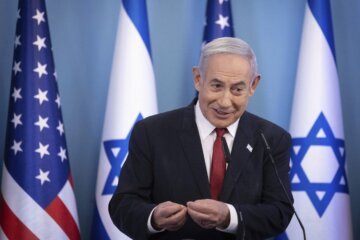 View Video
View Video
July 24th, 2024, 01:06 PM EDT
 View Video
View Video
July 23rd, 2024, 04:28 AM EDT
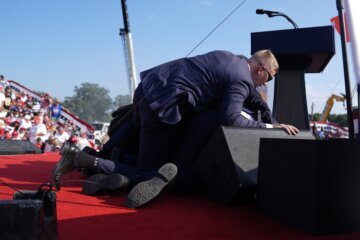 View Video
View Video
July 13th, 2024, 11:13 PM EDT
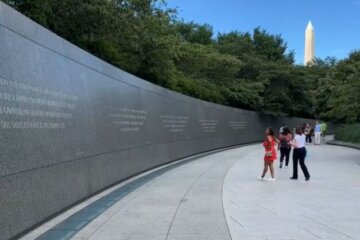 View Video
View Video
July 11th, 2024, 05:54 AM EDT
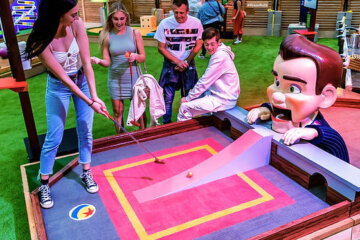 View Video
View Video
June 11th, 2024, 06:15 AM EDT
 View Video
View Video
May 30th, 2024, 05:59 PM EDT
 View Video
View Video
May 9th, 2024, 01:23 PM EDT
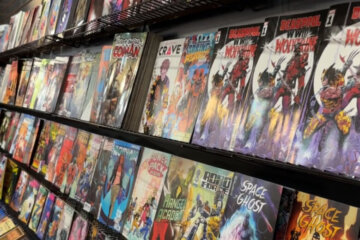 View Video
View Video
May 9th, 2024, 05:38 AM EDT
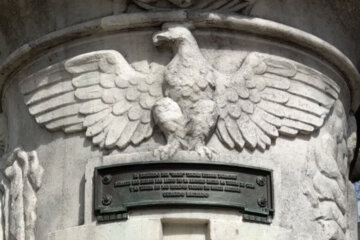 View Video
View Video
March 14th, 2024, 05:01 AM EDT
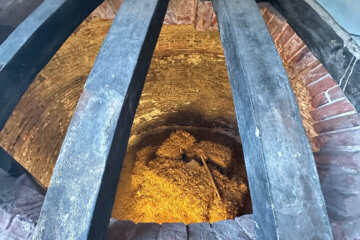 View Video
View Video
February 8th, 2024, 05:22 AM EST
 View Video
View Video
January 30th, 2024, 12:50 PM EST
 View Video
View Video
January 15th, 2024, 02:04 PM EST
 View Video
View Video
December 14th, 2023, 07:45 AM EST
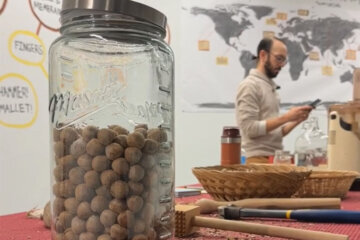 View Video
View Video
December 5th, 2023, 07:37 AM EST
 View Video
View Video
November 28th, 2023, 04:58 AM EST
 View Video
View Video
November 21st, 2023, 04:54 AM EST
 View Video
View Video
November 16th, 2023, 05:39 AM EST
 View Video
View Video
November 7th, 2023, 04:05 AM EST
 View Video
View Video
November 2nd, 2023, 05:01 AM EDT
 View Video
View Video
October 26th, 2023, 04:53 AM EDT
 View Video
View Video
October 24th, 2023, 04:39 AM EDT
 View Video
View Video
October 20th, 2023, 05:10 AM EDT
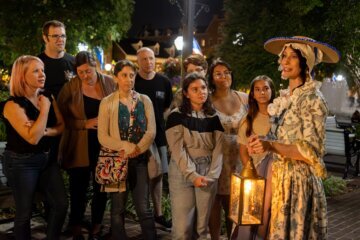 View Video
View Video
October 19th, 2023, 07:39 AM EDT
 View Video
View Video
August 30th, 2023, 11:49 AM EDT
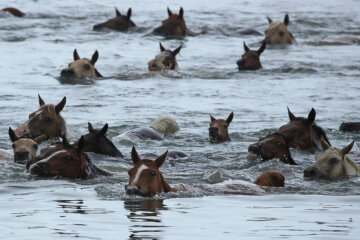 View Video
View Video
July 27th, 2023, 10:34 AM EDT
 View Video
View Video
June 15th, 2023, 01:21 PM EDT
 View Video
View Video
April 4th, 2023, 07:24 PM EDT
 View Video
View Video
March 29th, 2023, 07:19 PM EDT
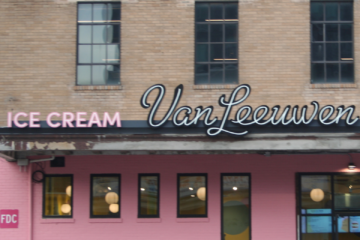 View Video
View Video
March 23rd, 2023, 05:55 AM EDT
 View Video
View Video
March 14th, 2023, 05:51 PM EDT
 View Video
View Video
March 8th, 2023, 05:56 PM EST
 View Video
View Video
March 1st, 2023, 06:27 PM EST
 View Video
View Video
February 23rd, 2023, 05:56 PM EST
 View Video
View Video
February 16th, 2023, 05:34 PM EST
 View Video
View Video
February 8th, 2023, 05:47 PM EST
 View Video
View Video
February 8th, 2023, 04:45 AM EST
 View Video
View Video
January 31st, 2023, 05:36 PM EST
 View Video
View Video
January 25th, 2023, 05:47 PM EST
 View Video
View Video
January 18th, 2023, 06:09 PM EST
 View Video
View Video
January 10th, 2023, 05:46 PM EST
 View Video
View Video
January 6th, 2023, 01:44 PM EST
 View Video
View Video
January 5th, 2023, 05:26 PM EST
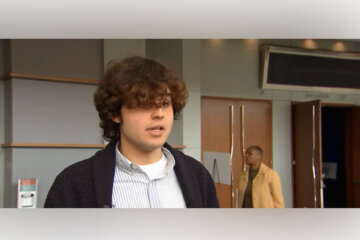 View Video
View Video
January 3rd, 2023, 08:12 AM EST
 View Video
View Video
December 29th, 2022, 05:06 PM EST
 View Video
View Video
December 26th, 2022, 10:23 AM EST
 View Video
View Video
December 22nd, 2022, 10:24 AM EST
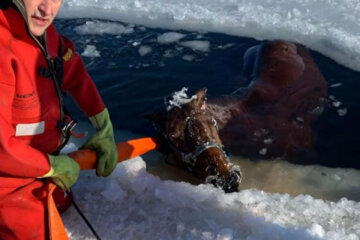 View Video
View Video
December 20th, 2022, 08:06 AM EST
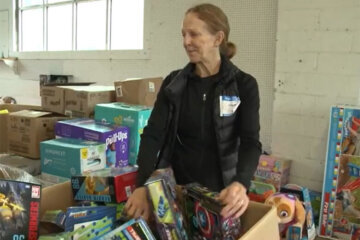 View Video
View Video
December 8th, 2022, 07:33 AM EST
 View Video
View Video
December 7th, 2022, 06:10 PM EST
 View Video
View Video
December 6th, 2022, 09:35 AM EST
 View Video
View Video
December 2nd, 2022, 12:03 PM EST
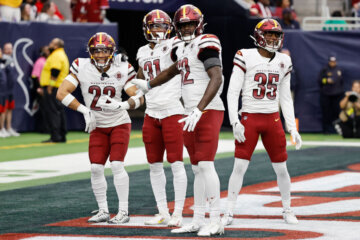 View Video
View Video
November 22nd, 2022, 04:57 PM EST
 View Video
View Video
November 15th, 2022, 11:02 PM EST
 View Video
View Video
November 9th, 2022, 07:21 PM EST
 View Video
View Video
November 3rd, 2022, 06:00 PM EDT
 View Video
View Video
November 2nd, 2022, 06:49 PM EDT
 View Video
View Video
October 27th, 2022, 05:39 PM EDT
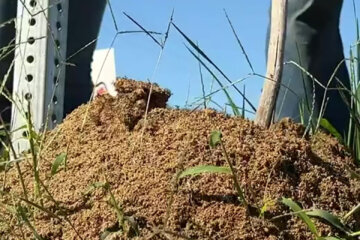 View Video
View Video
October 25th, 2022, 09:26 AM EDT
 View Video
View Video
October 25th, 2022, 09:24 AM EDT
 View Video
View Video
October 20th, 2022, 07:41 PM EDT
 View Video
View Video
October 14th, 2022, 05:16 PM EDT
 View Video
View Video
October 6th, 2022, 06:10 PM EDT
 View Video
View Video
September 29th, 2022, 05:42 PM EDT
 View Video
View Video
September 22nd, 2022, 05:59 PM EDT
 View Video
View Video
September 22nd, 2022, 11:22 AM EDT
 View Video
View Video
September 15th, 2022, 04:58 PM EDT
 View Video
View Video
September 8th, 2022, 04:48 PM EDT
 View Video
View Video
August 31st, 2022, 04:51 PM EDT
 View Video
View Video
August 25th, 2022, 05:23 PM EDT
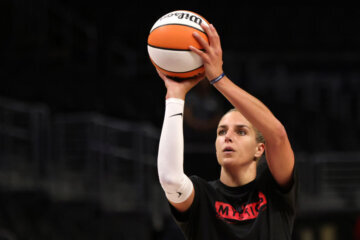 View Video
View Video
August 18th, 2022, 04:08 PM EDT
 View Video
View Video
August 17th, 2022, 08:28 PM EDT
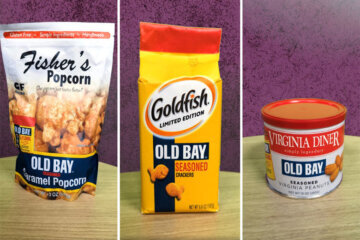 View Video
View Video
August 17th, 2022, 10:21 AM EDT
 View Video
View Video
August 11th, 2022, 04:50 PM EDT
 View Video
View Video
August 3rd, 2022, 05:19 PM EDT
 View Video
View Video
August 1st, 2022, 06:37 PM EDT
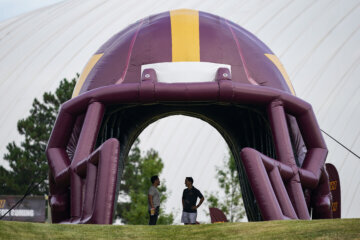 View Video
View Video
July 27th, 2022, 05:39 PM EDT
 View Video
View Video
July 20th, 2022, 04:20 PM EDT
 View Video
View Video
July 18th, 2022, 08:48 AM EDT
 View Video
View Video
July 6th, 2022, 03:45 PM EDT
 View Video
View Video
June 30th, 2022, 11:44 AM EDT
 View Video
View Video
June 29th, 2022, 04:23 PM EDT
 View Video
View Video
June 25th, 2022, 06:20 PM EDT
 View Video
View Video
June 24th, 2022, 11:59 PM EDT
 View Video
View Video
June 22nd, 2022, 06:18 PM EDT
 View Video
View Video
June 17th, 2022, 01:00 AM EDT
 View Video
View Video
June 15th, 2022, 04:48 PM EDT
 View Video
View Video
June 8th, 2022, 05:45 PM EDT
 View Video
View Video
June 1st, 2022, 06:13 PM EDT
 View Video
View Video
June 1st, 2022, 02:44 PM EDT
 View Video
View Video
May 13th, 2022, 12:05 AM EDT
 View Video
View Video
May 2nd, 2022, 02:33 PM EDT
 View Video
View Video
April 27th, 2022, 05:16 PM EDT
 View Video
View Video
April 21st, 2022, 08:40 AM EDT
 View Video
View Video
April 20th, 2022, 06:04 PM EDT
 View Video
View Video
April 13th, 2022, 05:23 PM EDT
 View Video
View Video
April 6th, 2022, 05:23 PM EDT
 View Video
View Video
April 5th, 2022, 06:22 PM EDT
 View Video
View Video
March 24th, 2022, 08:28 AM EDT
 View Video
View Video
March 24th, 2022, 01:45 AM EDT
 View Video
View Video
March 23rd, 2022, 03:42 PM EDT
 View Video
View Video
March 22nd, 2022, 09:30 PM EDT
 View Video
View Video
March 9th, 2022, 04:12 PM EST
 View Video
View Video
March 2nd, 2022, 05:27 PM EST
 View Video
View Video
February 23rd, 2022, 06:16 PM EST
 View Video
View Video
February 16th, 2022, 05:10 PM EST
 View Video
View Video
February 9th, 2022, 06:32 PM EST
 View Video
View Video
February 9th, 2022, 04:12 AM EST
 View Video
View Video
February 3rd, 2022, 10:13 AM EST
 View Video
View Video
February 2nd, 2022, 06:43 PM EST
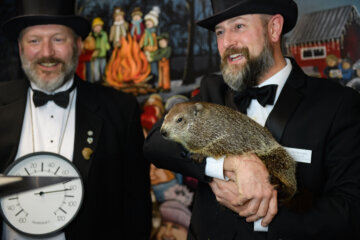 View Video
View Video
February 2nd, 2022, 07:52 AM EST
 View Video
View Video
January 26th, 2022, 05:29 PM EST
 View Video
View Video
January 19th, 2022, 07:09 PM EST
 View Video
View Video
January 12th, 2022, 04:02 PM EST
 View Video
View Video
January 6th, 2022, 04:57 PM EST
 View Video
View Video
January 5th, 2022, 06:40 PM EST
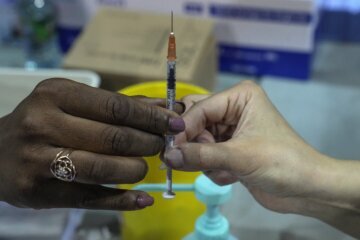 View Video
View Video
December 22nd, 2021, 02:54 PM EST
 View Video
View Video
December 22nd, 2021, 02:40 PM EST
 View Video
View Video
December 15th, 2021, 06:52 PM EST
 View Video
View Video
December 15th, 2021, 05:52 PM EST
 View Video
View Video
December 9th, 2021, 06:50 AM EST
 View Video
View Video
December 8th, 2021, 05:55 PM EST
 View Video
View Video
December 3rd, 2021, 07:51 AM EST
 View Video
View Video
December 1st, 2021, 06:16 PM EST
 View Video
View Video
November 24th, 2021, 06:23 PM EST
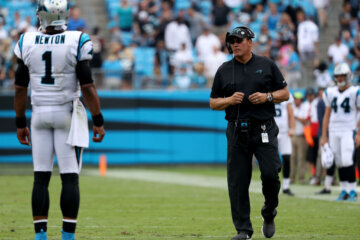 View Video
View Video
November 17th, 2021, 06:59 PM EST
 View Video
View Video
November 10th, 2021, 06:39 PM EST
 View Video
View Video
November 3rd, 2021, 06:45 PM EDT
 View Video
View Video
October 27th, 2021, 08:22 PM EDT
 View Video
View Video
October 13th, 2021, 05:44 PM EDT
 View Video
View Video
October 6th, 2021, 05:06 PM EDT
 View Video
View Video
September 29th, 2021, 02:31 PM EDT
 View Video
View Video
September 22nd, 2021, 05:44 PM EDT
 View Video
View Video
September 21st, 2021, 05:24 PM EDT
 View Video
View Video
September 15th, 2021, 04:50 PM EDT
 View Video
View Video
September 13th, 2021, 10:48 AM EDT
 View Video
View Video
September 8th, 2021, 04:20 PM EDT
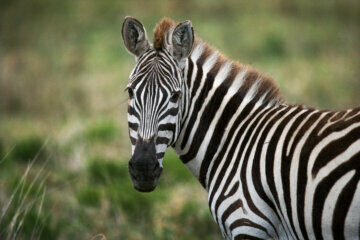 View Video
View Video
September 7th, 2021, 09:30 PM EDT
 View Video
View Video
September 1st, 2021, 02:12 PM EDT
 View Video
View Video
August 24th, 2021, 02:15 PM EDT
 View Video
View Video
August 17th, 2021, 12:33 PM EDT
 View Video
View Video
August 10th, 2021, 02:40 PM EDT
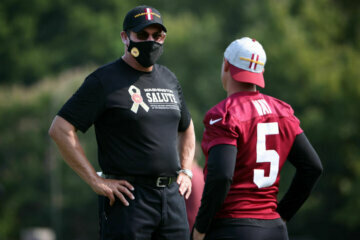 View Video
View Video
August 3rd, 2021, 02:01 PM EDT
 View Video
View Video
July 27th, 2021, 03:06 PM EDT
 View Video
View Video
July 20th, 2021, 01:08 PM EDT
 View Video
View Video
July 13th, 2021, 01:14 PM EDT
 View Video
View Video
July 6th, 2021, 01:56 PM EDT
 View Video
View Video
June 29th, 2021, 02:27 PM EDT
 View Video
View Video
June 25th, 2021, 06:52 PM EDT
 View Video
View Video
June 25th, 2021, 08:13 AM EDT
 View Video
View Video
June 25th, 2021, 08:02 AM EDT
 View Video
View Video
June 25th, 2021, 07:46 AM EDT
 View Video
View Video
June 8th, 2021, 02:03 PM EDT
 View Video
View Video
May 25th, 2021, 03:16 PM EDT
 View Video
View Video
May 11th, 2021, 02:00 PM EDT
 View Video
View Video
May 5th, 2021, 08:38 AM EDT
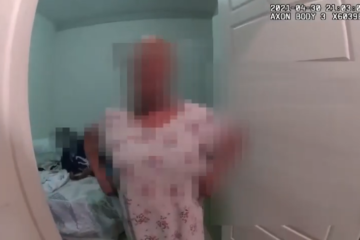 View Video
View Video
May 5th, 2021, 06:35 AM EDT
 View Video
View Video
May 4th, 2021, 02:21 PM EDT
 View Video
View Video
April 27th, 2021, 03:29 PM EDT
 View Video
View Video
April 21st, 2021, 09:31 AM EDT
 View Video
View Video
April 20th, 2021, 02:36 PM EDT
 View Video
View Video
April 14th, 2021, 09:39 AM EDT
 View Video
View Video
April 13th, 2021, 02:36 PM EDT
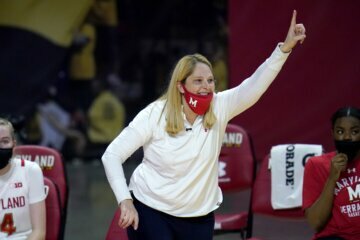 View Video
View Video
March 23rd, 2021, 03:41 PM EDT
 View Video
View Video
March 16th, 2021, 02:36 PM EDT
 View Video
View Video
March 11th, 2021, 09:05 PM EST
 View Video
View Video
March 9th, 2021, 02:08 PM EST
 View Video
View Video
March 4th, 2021, 08:09 AM EST
 View Video
View Video
March 3rd, 2021, 09:31 AM EST
 View Video
View Video
March 2nd, 2021, 09:10 AM EST
 View Video
View Video
February 25th, 2021, 09:45 AM EST
 View Video
View Video
February 23rd, 2021, 02:38 PM EST
 View Video
View Video
February 22nd, 2021, 03:19 PM EST
 View Video
View Video
February 16th, 2021, 03:09 PM EST
 View Video
View Video
February 10th, 2021, 07:45 PM EST
 View Video
View Video
February 3rd, 2021, 07:38 AM EST
 View Video
View Video
February 2nd, 2021, 09:25 PM EST
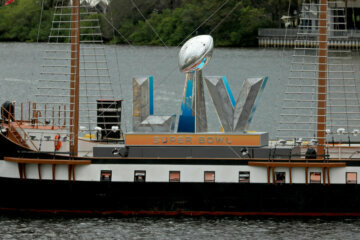 View Video
View Video
February 2nd, 2021, 03:14 PM EST
 View Video
View Video
January 26th, 2021, 03:13 PM EST
 View Video
View Video
January 21st, 2021, 08:31 AM EST
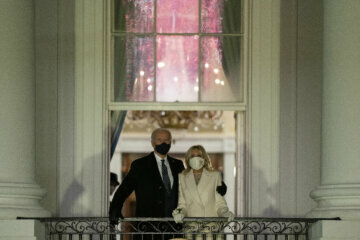 View Video
View Video
January 20th, 2021, 11:00 PM EST
 View Video
View Video
January 19th, 2021, 03:47 PM EST
 View Video
View Video
January 12th, 2021, 02:58 PM EST
 View Video
View Video
January 12th, 2021, 08:51 AM EST
 View Video
View Video
December 29th, 2020, 09:29 PM EST
 View Video
View Video
December 22nd, 2020, 08:56 PM EST
 View Video
View Video
December 18th, 2020, 09:17 AM EST
 View Video
View Video
December 18th, 2020, 03:51 AM EST
 View Video
View Video
December 17th, 2020, 07:27 AM EST
 View Video
View Video
December 16th, 2020, 02:07 AM EST
 View Video
View Video
December 14th, 2020, 07:29 PM EST
 View Video
View Video
December 8th, 2020, 02:18 PM EST
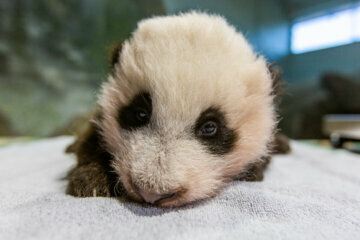 View Video
View Video
December 4th, 2020, 04:53 PM EST
 View Video
View Video
December 1st, 2020, 04:52 PM EST
 View Video
View Video
December 1st, 2020, 04:32 PM EST
 View Video
View Video
December 1st, 2020, 06:43 AM EST
 View Video
View Video
November 17th, 2020, 08:17 PM EST
 View Video
View Video
November 16th, 2020, 07:18 PM EST
 View Video
View Video
November 10th, 2020, 09:21 PM EST
 View Video
View Video
November 6th, 2020, 11:19 AM EST
 View Video
View Video
November 2nd, 2020, 10:46 AM EST
 View Video
View Video
October 28th, 2020, 08:52 AM EDT
 View Video
View Video
October 25th, 2020, 07:59 AM EDT
 View Video
View Video
October 22nd, 2020, 10:52 PM EDT
 View Video
View Video
October 20th, 2020, 08:13 PM EDT
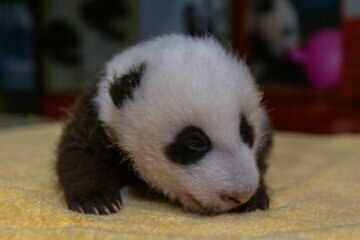 View Video
View Video
October 16th, 2020, 11:31 PM EDT
 View Video
View Video
October 14th, 2020, 08:31 AM EDT
 View Video
View Video
October 13th, 2020, 09:11 PM EDT
 View Video
View Video
October 12th, 2020, 07:27 AM EDT
 View Video
View Video
October 7th, 2020, 10:19 PM EDT
 View Video
View Video
September 29th, 2020, 11:13 PM EDT
 View Video
View Video
September 25th, 2020, 03:36 PM EDT
 View Video
View Video
September 24th, 2020, 08:59 AM EDT
 View Video
View Video
September 24th, 2020, 08:12 AM EDT
 View Video
View Video
September 24th, 2020, 02:09 AM EDT
 View Video
View Video
September 23rd, 2020, 12:16 PM EDT
 View Video
View Video
September 17th, 2020, 02:14 PM EDT
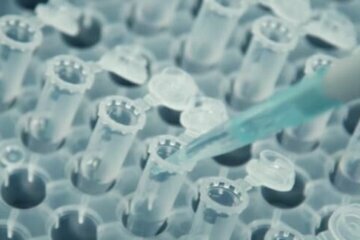 View Video
View Video
August 25th, 2020, 11:12 AM EDT
 View Video
View Video
August 21st, 2020, 08:19 AM EDT
 View Video
View Video
August 14th, 2020, 11:22 AM EDT
 View Video
View Video
August 14th, 2020, 05:38 AM EDT
 View Video
View Video
August 12th, 2020, 01:40 PM EDT
 View Video
View Video
July 31st, 2020, 03:10 PM EDT
 View Video
View Video
July 31st, 2020, 02:01 PM EDT
 View Video
View Video
July 31st, 2020, 01:00 PM EDT
 View Video
View Video
July 28th, 2020, 03:57 PM EDT
 View Video
View Video
July 27th, 2020, 10:30 PM EDT
 View Video
View Video
July 26th, 2020, 10:50 AM EDT
 View Video
View Video
July 25th, 2020, 06:45 PM EDT
 View Video
View Video
July 20th, 2020, 11:21 AM EDT
 View Video
View Video
July 20th, 2020, 08:44 AM EDT
 View Video
View Video
July 19th, 2020, 08:47 PM EDT
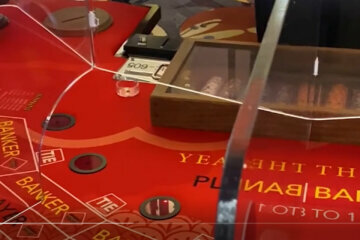 View Video
View Video
June 26th, 2020, 09:34 AM EDT
 View Video
View Video
June 11th, 2020, 04:08 AM EDT
 View Video
View Video
June 10th, 2020, 02:57 PM EDT
 View Video
View Video
June 10th, 2020, 01:34 PM EDT
 View Video
View Video
June 9th, 2020, 12:56 AM EDT
 View Video
View Video
June 6th, 2020, 02:04 PM EDT
 View Video
View Video
June 2nd, 2020, 11:22 AM EDT
 View Video
View Video
May 29th, 2020, 11:01 AM EDT
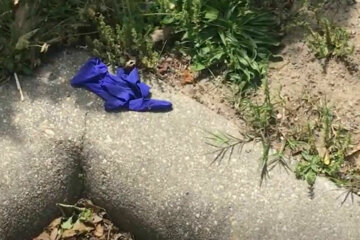 View Video
View Video
May 20th, 2020, 01:51 PM EDT
 View Video
View Video
May 19th, 2020, 01:15 PM EDT
 View Video
View Video
May 12th, 2020, 07:32 AM EDT
 View Video
View Video
May 5th, 2020, 02:24 PM EDT
 View Video
View Video
May 5th, 2020, 01:22 AM EDT
 View Video
View Video
May 4th, 2020, 10:14 PM EDT
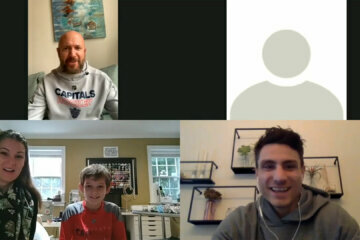 View Video
View Video
May 1st, 2020, 02:09 PM EDT
 View Video
View Video
April 29th, 2020, 09:52 AM EDT
 View Video
View Video
April 28th, 2020, 10:34 PM EDT
 View Video
View Video
April 28th, 2020, 11:56 AM EDT
 View Video
View Video
April 27th, 2020, 06:01 AM EDT
 View Video
View Video
April 15th, 2020, 03:49 PM EDT
 View Video
View Video
April 15th, 2020, 03:48 PM EDT
 View Video
View Video
April 14th, 2020, 01:07 PM EDT
 View Video
View Video
April 14th, 2020, 10:13 AM EDT
 View Video
View Video
April 13th, 2020, 05:49 PM EDT
 View Video
View Video
April 12th, 2020, 10:32 AM EDT
 View Video
View Video
April 10th, 2020, 05:13 AM EDT
 View Video
View Video
April 9th, 2020, 09:36 AM EDT
 View Video
View Video
April 3rd, 2020, 03:26 PM EDT
 View Video
View Video
March 30th, 2020, 09:58 AM EDT
 View Video
View Video
March 24th, 2020, 01:54 AM EDT
 View Video
View Video
March 23rd, 2020, 09:31 PM EDT
 View Video
View Video
March 23rd, 2020, 07:38 PM EDT
 View Video
View Video
March 20th, 2020, 10:47 AM EDT
 View Video
View Video
March 19th, 2020, 10:27 AM EDT
 View Video
View Video
March 18th, 2020, 10:51 AM EDT
 View Video
View Video
March 17th, 2020, 12:45 PM EDT
 View Video
View Video
March 17th, 2020, 10:39 AM EDT
 View Video
View Video
March 17th, 2020, 12:43 AM EDT
 View Video
View Video
March 11th, 2020, 07:23 PM EDT
 View Video
View Video
March 9th, 2020, 09:56 AM EDT
 View Video
View Video
March 9th, 2020, 08:35 AM EDT
 View Video
View Video
March 8th, 2020, 04:02 AM EDT
 View Video
View Video
February 28th, 2020, 10:32 AM EST
 View Video
View Video
February 26th, 2020, 05:21 PM EST
 View Video
View Video
February 25th, 2020, 06:24 PM EST
 View Video
View Video
February 21st, 2020, 07:45 AM EST
 View Video
View Video
February 20th, 2020, 08:17 AM EST
 View Video
View Video
February 20th, 2020, 06:51 AM EST
 View Video
View Video
February 19th, 2020, 09:03 PM EST
 View Video
View Video
February 19th, 2020, 10:02 AM EST
 View Video
View Video
February 14th, 2020, 03:30 PM EST
 View Video
View Video
February 13th, 2020, 07:20 AM EST
 View Video
View Video
February 13th, 2020, 07:18 AM EST
 View Video
View Video
February 12th, 2020, 11:22 AM EST
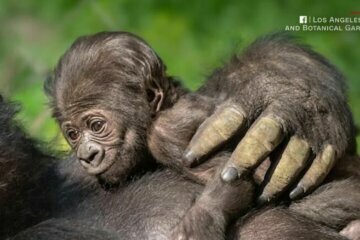 View Video
View Video
February 12th, 2020, 10:35 AM EST
 View Video
View Video
February 12th, 2020, 07:17 AM EST
 View Video
View Video
February 11th, 2020, 02:56 PM EST
 View Video
View Video
February 11th, 2020, 11:53 AM EST
 View Video
View Video
February 7th, 2020, 06:06 PM EST
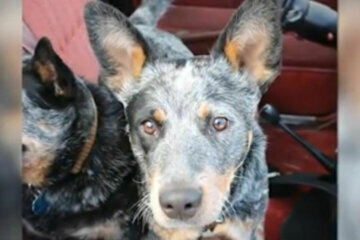 View Video
View Video
February 5th, 2020, 11:05 AM EST
 View Video
View Video
February 3rd, 2020, 05:00 PM EST
 View Video
View Video
February 2nd, 2020, 07:30 AM EST
 View Video
View Video
January 29th, 2020, 12:19 PM EST
 View Video
View Video
January 29th, 2020, 07:41 AM EST
 View Video
View Video
January 26th, 2020, 05:35 PM EST
 View Video
View Video
January 25th, 2020, 09:36 AM EST
 View Video
View Video
January 19th, 2020, 03:18 PM EST
 View Video
View Video
January 17th, 2020, 01:26 PM EST
 View Video
View Video
January 16th, 2020, 12:25 PM EST
 View Video
View Video
January 15th, 2020, 09:50 AM EST
 View Video
View Video
January 10th, 2020, 10:09 AM EST
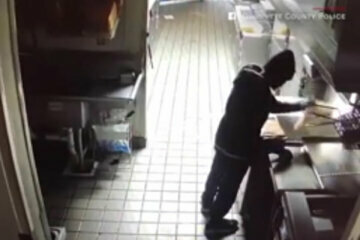 View Video
View Video
January 9th, 2020, 10:57 AM EST
 View Video
View Video
January 7th, 2020, 02:23 PM EST
 View Video
View Video
January 7th, 2020, 11:57 AM EST
 View Video
View Video
January 7th, 2020, 09:43 AM EST
 View Video
View Video
January 7th, 2020, 01:37 AM EST
 View Video
View Video
January 2nd, 2020, 02:49 PM EST
 View Video
View Video
January 2nd, 2020, 11:39 AM EST
 View Video
View Video
January 1st, 2020, 04:40 PM EST
 View Video
View Video
January 1st, 2020, 06:41 AM EST
 View Video
View Video
December 31st, 2019, 10:46 AM EST
 View Video
View Video
December 31st, 2019, 10:15 AM EST
 View Video
View Video
December 30th, 2019, 03:39 PM EST
 View Video
View Video
December 30th, 2019, 12:11 PM EST
 View Video
View Video
December 24th, 2019, 10:32 AM EST
 View Video
View Video
December 13th, 2019, 08:26 AM EST
 View Video
View Video
December 12th, 2019, 07:56 AM EST
 View Video
View Video
December 11th, 2019, 05:35 PM EST
 View Video
View Video
December 10th, 2019, 08:28 AM EST
 View Video
View Video
December 5th, 2019, 08:33 AM EST
 View Video
View Video
December 4th, 2019, 07:51 AM EST
 View Video
View Video
December 4th, 2019, 03:18 AM EST
 View Video
View Video
December 2nd, 2019, 10:21 AM EST
 View Video
View Video
November 25th, 2019, 08:00 PM EST
 View Video
View Video
November 22nd, 2019, 03:15 PM EST
 View Video
View Video
November 22nd, 2019, 02:57 PM EST
 View Video
View Video
November 21st, 2019, 01:02 AM EST
 View Video
View Video
November 20th, 2019, 08:15 PM EST
 View Video
View Video
November 20th, 2019, 12:54 PM EST
 View Video
View Video
November 19th, 2019, 08:17 PM EST
 View Video
View Video
November 19th, 2019, 10:11 AM EST
 View Video
View Video
November 19th, 2019, 12:08 AM EST
 View Video
View Video
November 18th, 2019, 02:17 PM EST
 View Video
View Video
November 17th, 2019, 06:55 PM EST
 View Video
View Video
November 16th, 2019, 08:25 PM EST
 View Video
View Video
November 16th, 2019, 03:54 PM EST
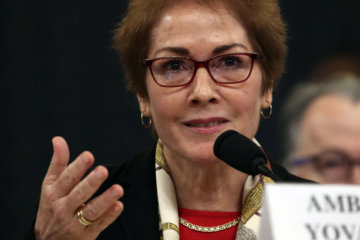 View Video
View Video
November 15th, 2019, 03:45 PM EST
 View Video
View Video
November 13th, 2019, 12:17 PM EST
 View Video
View Video
November 12th, 2019, 11:41 AM EST
 View Video
View Video
November 11th, 2019, 09:48 PM EST
 View Video
View Video
November 11th, 2019, 04:03 PM EST
 View Video
View Video
November 11th, 2019, 01:14 PM EST
 View Video
View Video
November 11th, 2019, 12:21 PM EST
 View Video
View Video
November 7th, 2019, 12:42 PM EST
 View Video
View Video
November 6th, 2019, 01:11 PM EST
 View Video
View Video
November 6th, 2019, 08:01 AM EST
 View Video
View Video
November 6th, 2019, 04:30 AM EST
 View Video
View Video
November 5th, 2019, 11:56 PM EST
 View Video
View Video
November 5th, 2019, 03:50 PM EST
 View Video
View Video
November 4th, 2019, 10:08 PM EST
 View Video
View Video
October 31st, 2019, 09:20 PM EDT
 View Video
View Video
October 29th, 2019, 02:23 PM EDT
 View Video
View Video
October 29th, 2019, 01:26 PM EDT
 View Video
View Video
October 29th, 2019, 09:13 AM EDT
 View Video
View Video
October 28th, 2019, 12:46 PM EDT
 View Video
View Video
October 28th, 2019, 07:30 AM EDT
 View Video
View Video
October 27th, 2019, 01:30 PM EDT
 View Video
View Video
October 26th, 2019, 01:22 PM EDT
 View Video
View Video
October 24th, 2019, 09:14 AM EDT
 View Video
View Video
October 23rd, 2019, 09:57 AM EDT
 View Video
View Video
October 22nd, 2019, 09:31 AM EDT
 View Video
View Video
October 21st, 2019, 05:54 PM EDT
 View Video
View Video
October 21st, 2019, 06:40 AM EDT
 View Video
View Video
October 18th, 2019, 11:37 AM EDT
 View Video
View Video
October 15th, 2019, 12:00 PM EDT
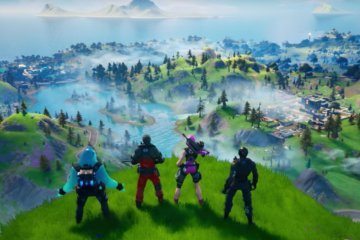 View Video
View Video
October 15th, 2019, 08:15 AM EDT
 View Video
View Video
October 14th, 2019, 09:15 PM EDT
 View Video
View Video
October 14th, 2019, 03:01 PM EDT
 View Video
View Video
October 14th, 2019, 12:16 PM EDT
 View Video
View Video
October 10th, 2019, 08:26 AM EDT
 View Video
View Video
October 9th, 2019, 09:57 PM EDT
 View Video
View Video
October 9th, 2019, 11:28 AM EDT
 View Video
View Video
October 9th, 2019, 09:52 AM EDT
 View Video
View Video
October 8th, 2019, 06:38 PM EDT
 View Video
View Video
October 8th, 2019, 11:07 AM EDT
 View Video
View Video
October 8th, 2019, 06:35 AM EDT
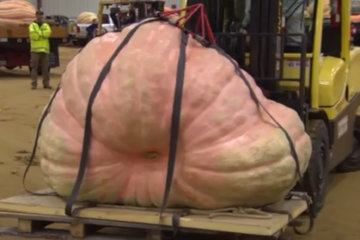 View Video
View Video
October 7th, 2019, 02:38 PM EDT
 View Video
View Video
October 7th, 2019, 10:20 AM EDT
 View Video
View Video
October 6th, 2019, 03:44 PM EDT
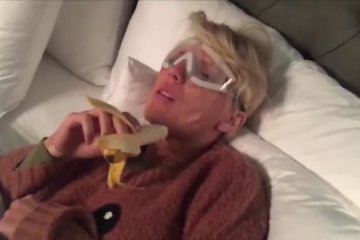 View Video
View Video
October 4th, 2019, 11:18 AM EDT
 View Video
View Video
October 4th, 2019, 11:13 AM EDT
 View Video
View Video
October 3rd, 2019, 06:00 PM EDT
 View Video
View Video
October 3rd, 2019, 10:50 AM EDT
 View Video
View Video
October 3rd, 2019, 08:13 AM EDT
 View Video
View Video
October 2nd, 2019, 06:47 PM EDT
 View Video
View Video
October 2nd, 2019, 03:32 AM EDT
 View Video
View Video
October 1st, 2019, 05:14 PM EDT
 View Video
View Video
October 1st, 2019, 10:55 AM EDT
 View Video
View Video
October 1st, 2019, 02:58 AM EDT
 View Video
View Video
September 30th, 2019, 09:52 AM EDT
 View Video
View Video
September 29th, 2019, 07:23 PM EDT
 View Video
View Video
September 27th, 2019, 11:44 AM EDT
 View Video
View Video
September 27th, 2019, 09:50 AM EDT
 View Video
View Video
September 26th, 2019, 09:34 AM EDT
 View Video
View Video
September 26th, 2019, 05:21 AM EDT
 View Video
View Video
September 25th, 2019, 06:59 AM EDT
 View Video
View Video
September 25th, 2019, 06:19 AM EDT
 View Video
View Video
September 24th, 2019, 11:22 AM EDT
 View Video
View Video
September 24th, 2019, 09:36 AM EDT
 View Video
View Video
September 23rd, 2019, 11:34 AM EDT
 View Video
View Video
September 23rd, 2019, 10:07 AM EDT
 View Video
View Video
September 20th, 2019, 11:24 AM EDT
 View Video
View Video
September 19th, 2019, 11:21 AM EDT
 View Video
View Video
September 18th, 2019, 11:09 AM EDT
 View Video
View Video
September 18th, 2019, 10:44 AM EDT
 View Video
View Video
September 18th, 2019, 09:32 AM EDT
 View Video
View Video
September 17th, 2019, 09:06 PM EDT
 View Video
View Video
September 17th, 2019, 10:43 AM EDT
 View Video
View Video
September 17th, 2019, 09:48 AM EDT
 View Video
View Video
September 16th, 2019, 11:44 AM EDT
 View Video
View Video
September 13th, 2019, 03:03 PM EDT
 View Video
View Video
September 13th, 2019, 11:34 AM EDT
 View Video
View Video
September 13th, 2019, 09:43 AM EDT
 View Video
View Video
September 11th, 2019, 11:21 PM EDT
 View Video
View Video
September 11th, 2019, 07:13 PM EDT
 View Video
View Video
September 11th, 2019, 02:41 PM EDT
 View Video
View Video
September 11th, 2019, 10:59 AM EDT
 View Video
View Video
September 10th, 2019, 04:59 PM EDT
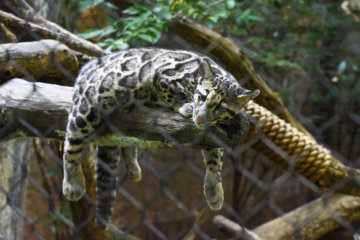 View Video
View Video
September 10th, 2019, 03:55 PM EDT
 View Video
View Video
September 10th, 2019, 03:24 PM EDT
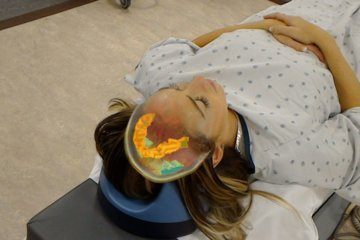 View Video
View Video
September 9th, 2019, 05:29 PM EDT
 View Video
View Video
September 9th, 2019, 10:00 AM EDT
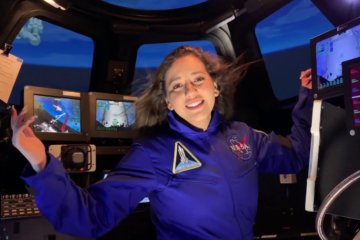 View Video
View Video
September 8th, 2019, 06:11 PM EDT
 View Video
View Video
September 8th, 2019, 03:05 PM EDT
 View Video
View Video
September 6th, 2019, 11:18 AM EDT
 View Video
View Video
September 6th, 2019, 09:52 AM EDT
 View Video
View Video
September 5th, 2019, 11:07 AM EDT
 View Video
View Video
September 4th, 2019, 12:35 PM EDT
 View Video
View Video
September 4th, 2019, 02:44 AM EDT
 View Video
View Video
September 3rd, 2019, 09:14 PM EDT
 View Video
View Video
September 3rd, 2019, 01:43 PM EDT
 View Video
View Video
September 2nd, 2019, 09:53 AM EDT
 View Video
View Video
August 28th, 2019, 11:34 AM EDT
 View Video
View Video
August 27th, 2019, 03:24 PM EDT
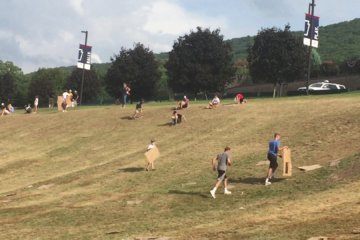 View Video
View Video
August 22nd, 2019, 01:19 PM EDT
 View Video
View Video
August 21st, 2019, 09:01 AM EDT
 View Video
View Video
August 20th, 2019, 08:00 AM EDT
 View Video
View Video
August 19th, 2019, 07:32 AM EDT
 View Video
View Video
August 14th, 2019, 10:38 AM EDT
 View Video
View Video
August 14th, 2019, 09:10 AM EDT
 View Video
View Video
August 13th, 2019, 10:36 PM EDT
 View Video
View Video
August 13th, 2019, 11:31 AM EDT
 View Video
View Video
August 12th, 2019, 06:33 PM EDT
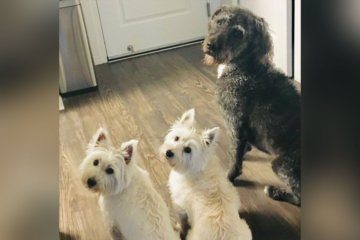 View Video
View Video
August 12th, 2019, 11:16 AM EDT
 View Video
View Video
August 12th, 2019, 07:41 AM EDT
 View Video
View Video
August 9th, 2019, 10:21 AM EDT
 View Video
View Video
August 7th, 2019, 11:18 AM EDT
 View Video
View Video
August 7th, 2019, 09:53 AM EDT
 View Video
View Video
August 7th, 2019, 09:04 AM EDT
 View Video
View Video
August 7th, 2019, 07:22 AM EDT
 View Video
View Video
August 6th, 2019, 03:59 PM EDT
 View Video
View Video
August 6th, 2019, 03:06 PM EDT
 View Video
View Video
August 5th, 2019, 12:41 PM EDT
 View Video
View Video
August 5th, 2019, 04:27 AM EDT
 View Video
View Video
August 5th, 2019, 03:45 AM EDT
 View Video
View Video
August 2nd, 2019, 11:19 AM EDT
 View Video
View Video
August 2nd, 2019, 11:10 AM EDT
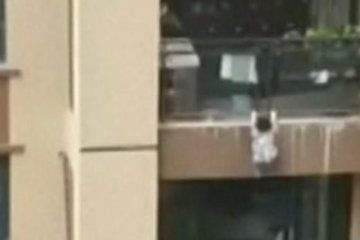 View Video
View Video
July 31st, 2019, 09:39 AM EDT
 View Video
View Video
July 31st, 2019, 04:52 AM EDT
 View Video
View Video
July 31st, 2019, 04:39 AM EDT
 View Video
View Video
July 30th, 2019, 02:53 PM EDT
 View Video
View Video
July 30th, 2019, 01:33 PM EDT
 View Video
View Video
July 30th, 2019, 11:01 AM EDT
 View Video
View Video
July 28th, 2019, 04:18 AM EDT
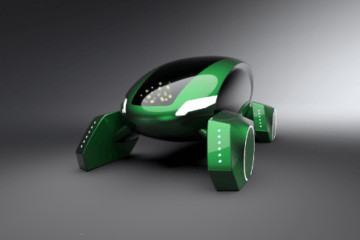 View Video
View Video
July 26th, 2019, 09:41 AM EDT
 View Video
View Video
July 25th, 2019, 07:51 AM EDT
 View Video
View Video
July 24th, 2019, 01:40 PM EDT
 View Video
View Video
July 23rd, 2019, 08:04 AM EDT
 View Video
View Video
July 22nd, 2019, 10:15 AM EDT
 View Video
View Video
July 19th, 2019, 07:20 PM EDT
 View Video
View Video
July 19th, 2019, 12:05 PM EDT
 View Video
View Video
July 19th, 2019, 04:40 AM EDT
 View Video
View Video
July 18th, 2019, 08:26 AM EDT
 View Video
View Video
July 17th, 2019, 04:12 PM EDT
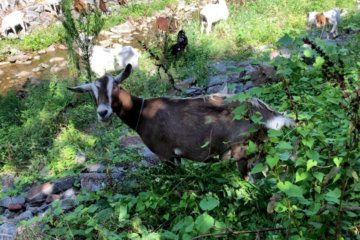 View Video
View Video
July 17th, 2019, 01:07 PM EDT
 View Video
View Video
July 16th, 2019, 10:42 AM EDT
 View Video
View Video
July 15th, 2019, 02:34 PM EDT
 View Video
View Video
July 15th, 2019, 10:11 AM EDT
 View Video
View Video
July 12th, 2019, 10:51 AM EDT
 View Video
View Video
July 11th, 2019, 07:39 PM EDT
 View Video
View Video
July 11th, 2019, 11:28 AM EDT
 View Video
View Video
July 11th, 2019, 07:54 AM EDT
 View Video
View Video
July 10th, 2019, 12:08 PM EDT